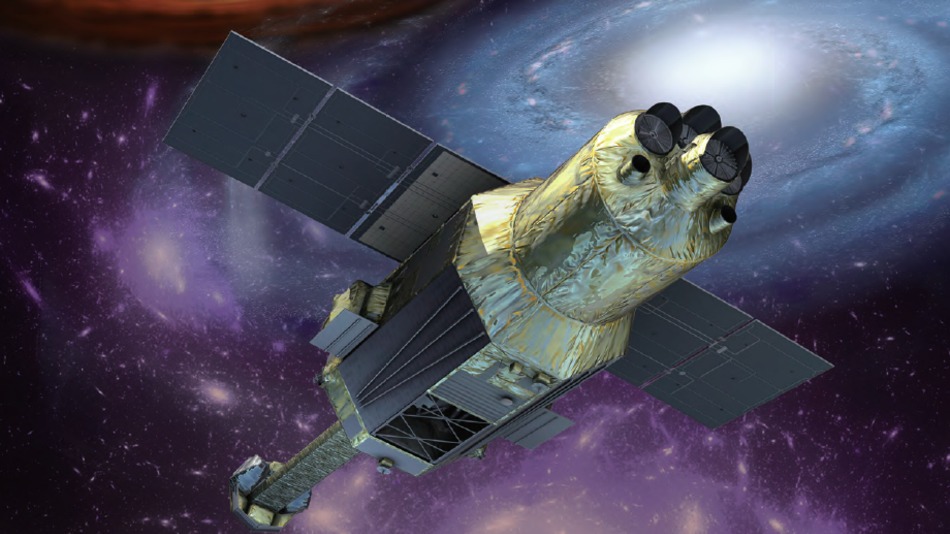Loss of the Hitomi satellite
Interview with
Last month, a quarter of a billion dollar satellite called Hitomi was launched into  space to study supermassive black holes, neutron stars and galaxy clusters using gamma and x-rays. But something seems to have gone wrong - the Japanese have lost contact with their satellite and the US Joint Space Operations Center has detected space debris floating around it. Matt Middleton explained to Kat Arney what happened...
space to study supermassive black holes, neutron stars and galaxy clusters using gamma and x-rays. But something seems to have gone wrong - the Japanese have lost contact with their satellite and the US Joint Space Operations Center has detected space debris floating around it. Matt Middleton explained to Kat Arney what happened...
Matt - Well, I hate to be a pessimist, but it doesn't look good. Just for the listeners, it's worth mentioning that this was going to be the next in a line of Japanese, or JAXA which is their version of NASA, x-ray satellites - this was going to be the sixth. And on board it had this amazing instrument called a microcalorimeter and, essentially, it allowed us to look, not with great spatial resolution, but incredible energy resolution. So emissions from neutron stars, black holes; they emit over a wide range of energies - you're allowed to look at very, very fine energies with this. So it was going to revolutionise the way we look at certain objects however, there was a problem.
It was launched on the 17th February and contact was lost on the 26th March, which is a terribly short lifespan for something which cost 273 million US Dollars. So, as you said, the US Joint Space Operations Centre observed a break-up into ten pieces on the 26th March and, in fact, it's now ten. There's no evidence that the spacecraft was hit by debris even though there is a lot in orbit and possibilities were that it could have been helium gas explosion, in fact, you need helium to cool this brand new form of detector. Or battery explosion, or a stuck open buster, or something like and they thought the recovery may require months, but there were still optimistic. However, the news is less great now. So it turns out they're pretty certain what happened was there was an instrument that told the spacecraft that it was rolling, but there wasn't a roll. And so the thrusters kicked in to counteract this invisible roll and so it started actually rolling. And then it really started to get out of hand and so went into safe mode which causes the most powerful thrusters to kick this into an even more powerful roll and it just spun round and round and then threw itself to pieces - sadly. So the outlook is pretty bleak. They are still trying to, and if you'd spent 273 million dollars on an instrument, you would probably also try and regain contact with it. So the future is pretty sad. I mean the hope is that they will maybe build a new satellite fairly quickly. The detector is already there but it's a pretty dark day, I'm afraid. Pretty sad news, I'm afraid.
Kat - How often does think of thing happen that instruments that are sent off into space go AWOL or explode?
Matt - Well, explode is kind of rare. You generally build in a lot of redundant systems. You build in a lot of safeguards so if this sort of thing happens you can gain contact with it and shut it down. I can tell you immediately - Keppler, a very famous mission that was in the news recently also lost contact with NASA but that's now been summoned, as it were, and is now back hopefully doing science in the next few months. They don't know the cause of that but it was nothing like as damaging as what happened to Hitomi. Also Xmen Newton, another satellite - they lost contact with that. It does happen. You know these things are incredibly complicated bits of kit and they're in the most harsh environment we can possibly imagine, so bad things have a tendency to happen, sadly.
Kat - And in terms of the research that's being done - how long did it take to build this instrument? Has it been a massive setback in terms of the science?
Matt - To build the detector not so much because it's been proven. I should mention that although it was only in orbit for a few weeks, it has actually done some science. And the belief is - I can't say, I'm not at liberty to do so - but the science it will do from that data is incredible. Absolutely, draw-droppingly, beautiful.
Kat - So just from those few weeks up there it's managed to get some good stuff?
Matt - It's done some fantastic stuff - it really has. It's so sad that we lost something that could do that sort of science. And in terms of making a satellite - you plan decades in advance. We're planning for an instrument called Athena that's going to be launched in 2028, and that got greenlit a couple of years ago. So it's a very, very long road to putting a satellite into orbit to do this science.










Comments
Add a comment